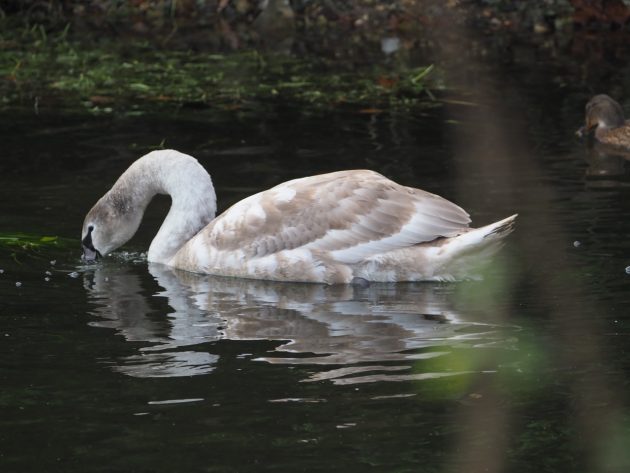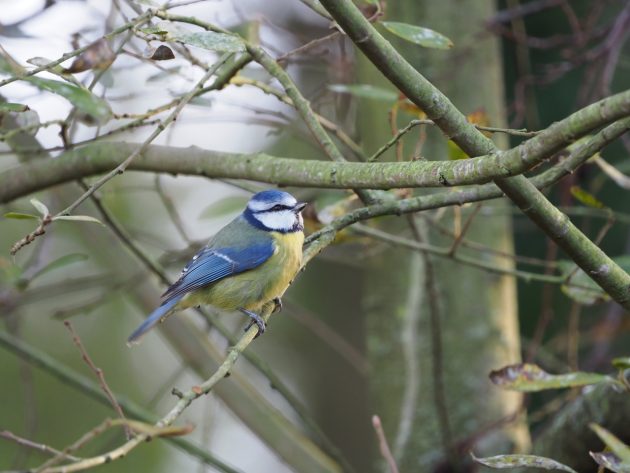Many years ago I was a motoring correspondent. It was much easier, and a lot more fun, to write about Porsches rather than Peugeots, or Ferraris than Fiats. There’s something of a parallel in writing about birds. Describing encounters with rarities, or even scarce birds, is much more appealing than common everyday birds, or noting outings when little of special interest is seen. However, we all have days when we don’t see a lot, and when nothing unexpected appears to quicken the pulse, but they can still be enjoyable. Last Monday was just such a day.
It dawned bright, cold and sunny, but there was a haziness in the sky that suggested the sunshine wouldn’t last. It didn’t, but it remained bright enough in the middle of the morning to tempt me out for a walk along the Little Ouse, the river that defines the border between the counties of Suffolk and Norfolk. It’s a modest little river. It rises just a couple of miles east of my house, then flows almost directly west for 37 miles until it joins the Great Ouse, which drains into the Wash.
Emma and the Little Ouse. Emma is on the Norfolk side of the river: the opposite bank is in Suffolk
I chose to walk along the Little Ouse at Santon Downham. This is about 20 miles from home, and here the river has gained sufficient middle-age spread to be big enough to be called a proper river, and though it’s hardly fast-flowing, it waters move with sufficient urgency to remind you that they are clearly heading somewhere. There’s a narrow bridleway (footpath) on the north bank that runs parallel to the river, and it was here that I walked.
One of the attractions of the walk is that Emma, my spaniel, can join me. She’s a good birdwatching dog, as she potters along happily with me, staying close and resisting the temptation to swim or chase birds or beasts. I always carry a lead and whistle, but on this occasion I had no cause to use either. It is noteworthy that during our 90-minute walk we didn’t meet another person.

A Little Egret surveys from its lofty perch
Our walk started well, as at the start I spotted a Little Egret perched high in a dead tree. It’s fewer than 30 years since Little Egrets started breeding in Britain, so there’s still something of a novelty about them, at least for birdwatchers of my generation. Today they may be relatively common and widespread, but they’re not a bird I expect to see everyday, while such an elegant bird always delights the eye.
The egret was perched in a stand of elderly poplars which were planted many years ago – the largest of the trees have massive boles many feet in circumference. On previous occasions I’ve seen some good birds in these trees, ranging from Crossbills to Brambings, but today the egret was the only bird of note.

A juvenile Mute Swan
There was rather more action on the river, where six Mute Swans were feeding actively on the underwater weed. With them were a couple of Little Grebes, diving enthusiastically, and seldom staying above the surface for any length of time. They were surprisingly difficult birds to spot, and unless you looked hard you would have missed them. I was to encounter several more farther down stream.

The Little Grebes were easy to overlook
There were several Mallard, too, chiefly loafing under the lee of the far bank. They watched me and my dog with a touch of suspicion, but they weren’t sufficiently worried to do anything more. Mallard weren’t the ducks I was hoping to see, for in the spring and summer I can usually find Mandarins here. These delightful little Chinese ducks are one of my favourites, and one of the few alien birds that have found their own ecological niche in this country, without upsetting the natural balance. Where the Mandarins go to in winter I’ve no idea, but they do desert the river.

Wary but not worried: a drake Mallard
This stretch of the river, with its stands of alder trees, was one of the last strongholds of Lesser Spotted Woodpeckers in Suffolk. Sadly, these diminutive woodpeckers have disappeared, and may well be extinct in Suffolk. I did see a flashy Great Spotted Woodpecker. I’ve taken much better pictures of these woodpeckers on other occasions, but the bird (below) did at least let me take a shot or two.

A flashy male Great Spotted Woodpecker
As I walked the odd Moorhen scuttled across the water. The old Suffolk name for these birds is Waterhen, which is really much more appropriate, as they live on water, not moors. Once, from the boggy, reeded ground to the north of the river, I heard a Water Rail squeal. It’s an unmistakable, almost pig-like sound, but you are much more likely to hear a Water Rail than see it, and that was the case today.

Dunnock
As I walked on I came across a flock of Siskins, high in the alders.They were feeding so busily that they were strangely silent, while none came anywhere close enough for me to even consider raising my camera. A Robin, and then a Dunnock, were a little more co-operative, while I had some fun with a passing tit flock. Both Blue and Great Tits paused long enough to have their photograph taken, but the Long-tailed Tits were just too quick. I did rather better with a Treecreeper (below) that was tagging along with the tits.

Treecreeper: a follower of the wandering tit flocks

Blue Tit
After a mile and half I turned round and retraced my steps. Once, from the far side of the river, several Blackbirds chimed their alarms, using their plaintive, muted warning call that suggested that they had spotted a predator. Had they seen an owl, or perhaps a fox? I paused, listed and watched, but after a while they calmed down, and I never discovered what the fuss was about.

Great Tit
My walk might not have produced a grand list of birds (my species total, logged on BirdTrack, revealed a mere 19 species), but Emma and I had enjoyed the fresh air and the wonderful autumn colours. It was simply good to be out – no time spent birdwatching is ever wasted. Who knows, perhaps next time I will see something more exciting, but both Emma and I came home happy.
Source link

